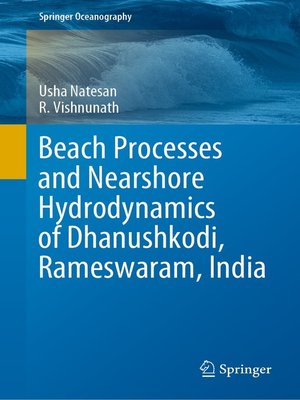Beach Processes and Nearshore Hydrodynamics of Dhanushkodi, Rameswaram, India
ebook ∣ Springer Oceanography
By Usha Natesan

Sign up to save your library
With an OverDrive account, you can save your favorite libraries for at-a-glance information about availability. Find out more about OverDrive accounts.
Find this title in Libby, the library reading app by OverDrive.



Search for a digital library with this title
Title found at these libraries:
| Library Name | Distance |
|---|---|
| Loading... |
This book focuses on understanding the shoreline dynamics, nearshore processes and sediment transport around Rameswaram Island and the cities of Dhanushkodi and Arichamunai. Rameswaram Island is located between the Gulf of Mannar on the south and Palk Bay on the north, between the southern tip of India and Sri Lanka, and is unique in terms of physical, chemical and biological processes. The Gulf of Mannar is established as a marine biodiversity conservation area by its richness of variety and variability of marine species such as corals, finfish, shellfish and other fishes. The island is predominantly influenced by four seasons: northeast monsoon, post-monsoon, summer and southwest monsoon; and the sedimentological and hydrodynamic conditions significantly change seasonally, resulting in the island's responding in a different manner with each season. It also explains the physical forces and their impacts around these areas. Rameswaram Island has existed naturally for a long period of time even under the influence of different water masses of the Gulf of Mannar and Palk Bay. Understanding the regional natural phenomena is the only solution to carry out the best management practices to develop coastal constructions and modifications.







